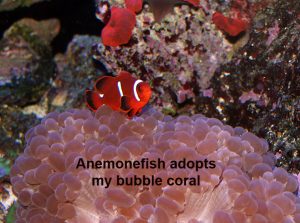When it comes to the biological
world, things are rarely as simple as they sometimes seem. For
example, from my past editorials discussing the tragic loss of my
fish I felt confident that the culprit was a protozoan
infestation, either Cryptocaryon or Oodinium (now
called Piscinoodinium). After reading an article in the
current Coral magazine, I’m no longer so sure.
Beginning on page 60, of vol. 3, number 4 there’s a report
entitled Pathogenic Bacteria in the Saltwater Aquarium Part
1, by Harald Muller. The subtitle of this report is Vibrio
infections and their impact. The author talks about an
importer of fish that experienced major losses of fish, who
initially assumed that the culprit was one of the protozoans just
mentioned, probably Brookynella or Uronema, but
discovered otherwise.
With this new prospective, I began to discuss this with other
aquarists, only to discover that what Mulder describes has in
fact decimated a number of established fish in a number of closed
systems – these where communities of fish that, like mine,
had flourished for many years. And, often the problem occurred
with the arrival of a new fish, or the stirring up of an old deep
sand bed. Although, I still believe that the culprit in my case
was Piscinoodinium, I’m no longer so sure.
Therefore, I went out and purchased an ozonizer, and now inject
100-mg/hr of O3 into one of my skimmers.
As a side note, one of the problems with using O3
is that humidity greatly reduces the amount by as much as 70% of
O3 that any given unit can deliver. The result is that
I’m using a 3-foot air dryer before the air input of the
ozonizer, because the air in my pump room is very humid.
I’m extremely proud of the series of articles done by
Jake Adams on the importance of circulation. Part 3 appears in
this issue, where Jake shows experimentally that the intensity of
light one illuminates ones corals with requires more water
movement: that is in his words, research demonstrating how
flow speed and lighting intensity go hand in hand.
It is generally known to most successful reef keepers that
water motion is important, and now thanks to Jake and other
scientists we know why and with much greater detail. Knowledge
like this empowers the aquarist to utilize better technology
leading to more successful reef systems.













0 Comments